Kevin Pietersen infuriated by Ashes cheat claims
- Published
Smith and Onions deny cheating
Kevin Pietersen has angrily denied reports in Australia which claimed he may have used special tape on his bat to prevent the detection of edges.
The stories suggested players from both England and Australia could be investigated but only named Pietersen.
"If I nick it, I'll walk," England batsman Pietersen, 33, said on Twitter., external
"To suggest I cheat by covering my bat with silicone [in order to fool the Hot Spot system] infuriates me. Such horrible lies."
Pietersen added:, external "How stupid would I be to try to hide a nick when it could save me on an lbw appeal, like in [the] first innings where Hot Spot showed I nicked it."
The reports originated from Channel Nine in Australia,, external which said: "It is understood that silicone tape is applied to the edge of the bat, and concerns centre around Kevin Pietersen's dismissal in the second innings in Manchester.
"It is not just England under investigation. Nine News understands that Australian batsmen may also be using this method."
Flintoff disappointed by bat cheating claims
International Cricket Council general manager Geoff Allardice is to meet England and Australia players in Durham in the build-up to the fourth Test, which starts on Friday, to address wider concerns over the use of the decision review system.
The subject of silicone tape, which is not banned, may be raised in the discussions. However the governing body stressed it was not investigating Channel Nine's claims.
Australia captain Michael Clarke insisted none of his squad were cheats.
"I didn't know there was such a thing you could do to hide nicking the ball on Hot Spot," he said.
"I wouldn't think it would make any difference. I've never heard of anyone doing it."
England seamer Graham Onions, who could return to the team at his home ground of Chester-le-Street this week, said of the allegations: "The first I had heard about it was when I walked in the changing room this morning.
"It seems completely blown out of proportion. I know England players would not put things on their bats.
"It sounds completely silly to even think people are putting things on their bats to try and aid or cover up decisions.
"It is a huge accusation. It is outrageous really. The excitement of me getting called up and seeing the lads again, to have these discussions it seems a little unfair and a little wrong really. I think maybe we can move on and talk about this Test match."
Warren Brennan, Hot Spot's inventor, said he and his company, BBG Sports, have agreed with the ICC they will not comment until after an investigation from the game's governing body.
Hot Spot works by detecting friction caused whenever the ball hits a bat or pad. The energy transfer produces heat, which is revealed by infra-red cameras.
The system has recently been criticised after failing to pick up edges during the Ashes series and England wicketkeeper Matt Prior told the Daily Telegraph:, external "I am not sure we trust Hot Spot any more. There are so many edges it has missed."
Pietersen was caught behind for eight in the second innings of the third Test at Old Trafford.
He reviewed the decision but although the Hot Spot technology showed no evidence of a mark on the bat, the verdict was upheld by television umpire Kumar Dharmasena, who heard a noise while watching a TV replay, suggesting contact had been made.
Snickometer technology - which measures sound and displays it graphically - is not permitted as part of the official DRS, but appeared to vindicate Dharmasena's call.
- Published7 August 2013
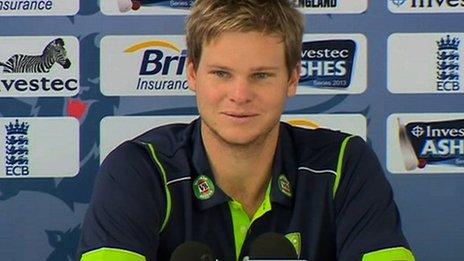
- Published1 August 2013
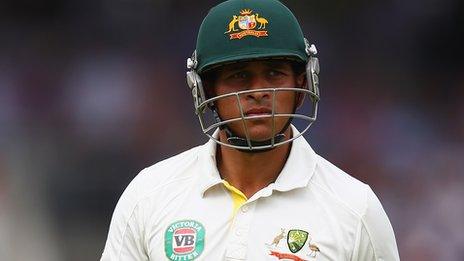
- Published16 July 2013
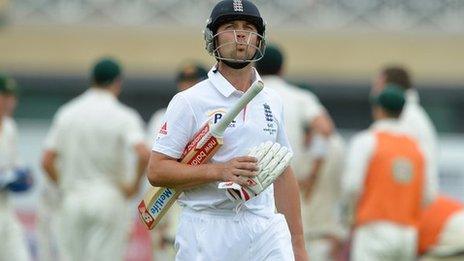
- Published18 July 2013
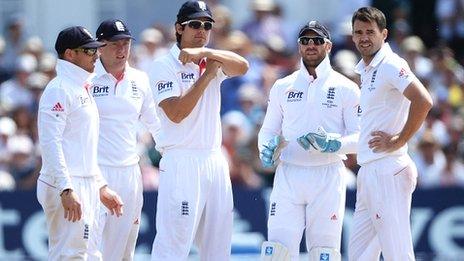
- Published17 July 2013
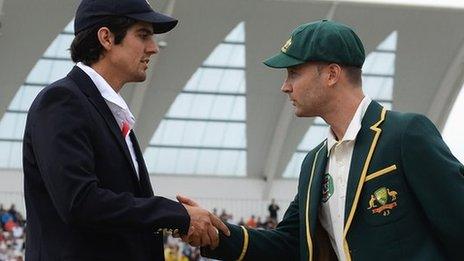
- Published26 August 2013

- Published10 March 2019

- Published18 October 2019
